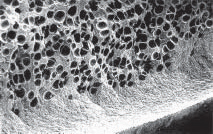
In the Spreewald, a UNESCO biosphere reserve south of Berlin, Omniplast’s GreenTube PVC helped renovate the buildings of a forest retreat while protecting the fragile environment by using no heavy metals. The secret? “Bionic design” using “tricks from nature,” the company says.
GreenTube SN10 pipes are resistant to chemicals, sunlight and the weather, says Uwe Scholz, Managing Director of Omniplast. “They’re coextruded uPVC foamcore that maintain their durability, yet are malleable and lightweight. And they’re fully recyclable.”
That’s especially important in a region like the Spreewald, where underground piping can be subject to earth movement due to a high water table. It’s a concept developed since 2005 by the Kunststoffrohrverband, led by engineer Robert Stein. His EU-wide study of drinking water and gas networks showed the need for flexible and elastic piping.
“We had to install a sewer line that had to have both a ring stiffness of SN10 while being elastic enough for the existing conditions,” says Jens Kiessling, managing director of the construction firm Ecoplan. The wastewater flows into a natural filtration system.
“It’s a model system and at the same time an object of reference I’m very proud about,” Kiessling says. “It’s ecological, durable, and sustainable, and environmentally friendly GreenTube from Omniplast is an integral part of that.”
Omniplast got their inspiration from nature: animal horns that are made of layers. A double layer of PVC with a foam layer inside. The inside surface is made with a lotus pattern, which allows it to self-clean, Scholz says.
“That also means less material used, because it’s not solid PVC, and that’s where we save on the oil,” he says. “We use 56% rock salt and 44% oil.”
